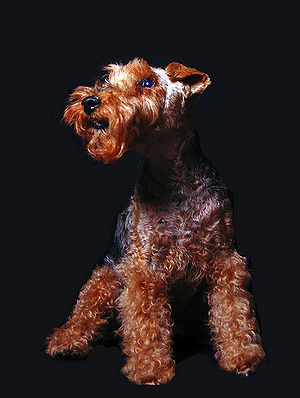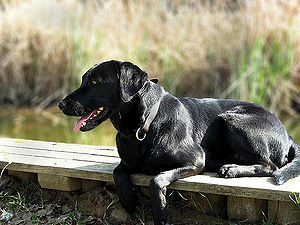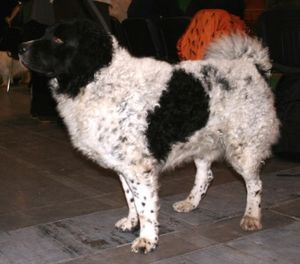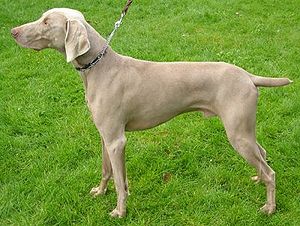 |
| Vital Statistics: |
| Place of Origin: England |
| Group: Gun dog, Terrier |
| Height: 15 1/2 in. |
| Weight: 20-22 lbs. |
| Life span: 10-12 yrs. |
| Trainability: moderate |
| Good with children: yes, with early socialization |
| Good with other pets: okay with other dogs, but due to high prey drive, not trustworthy with small animals |
What is the origin of the Welsh Terrier?
The Welsh Terrier may be the oldest dog breed stil in existence in the United Kingdom. The Welsh Terrier’s forbears, the Black and Tan Rough Terrier and the Old English Terrier, no longer exist. The first Welsh Terriers were brought to the U.S. in the late 1880s and used as show dogs. Charlie, the Welsh Terrier, was President John F. Kennedy’s beloved pet.
What does the Welsh Terrier look like?
The Welsh Terrier is a sturdy dog that resembles a square. Height is 15 1/2 in., weight is 20-22 lbs. The v-shaped ears fold over. The tail is docked where this practice is allowed. The face is square looking because of its whiskers and beard. The undercoat is soft, but the outercoat is wiry and hard. Colors are black and tan and grizzle with a black saddle. The Welsh Terrier barely sheds but needs stripping 3-4 times a year.
What is the temperament of the Welsh Terrier?
The Welsh Terrier is a lively, happy dog, typical terrier-type. They should have eary obedience training and socialization as with all dogs. They are good with children as they love to play. Welsh Terriers are very energetic and need lots of exercise to avoid behavior problems. They love to swim and do best with an active family. They can live in an apartment as long as they have enough exercise.
What is the Welsh Terrier used for?
Welsh Terriers were bred to hunt rodents, fox, badger and otter. They do very well in agility and tracking trials and make excellent watchdogs. They are high energy, lively companions.
- American Cocker Spaniel
- Boykin Spaniel
- Bracco Italiano
- Brittany Spaniel
- Chesapeake Bay Retriever
- Clumber Spaniel
- Curly-coated Retriever
- Dalmatian
- English Setter
- English Springer Spaniel
- German Shorthaired Pointer
- Gordon Setter
- Irish Red & White Setter
- Japanese Akita Inu
- Kai Ken Dog
- Karelian Bear Dog
- Labrador Retriever
- Lagotto Romagnolo
- Llewellyn Setter
- Mountain Cur
- Nova Scotia Duck Tolling Retriever
- Picardy Spaniel
- Pudelpointer
- Russian Spaniel
- Spinone Italiano
- Vizsla
- Weimaraner
- Welsh Springer Spaniel
- Wetterhoun
- Wirehaired Pointing Griffon
- Wirehaired Vizsla
- Airedale Terrier
- American Pit Bull Terrier
- American Stratfordshire Terrier
- Australian Terrier
- Bedlington Terrier
- Black Russian Terrier
- Border Terrier
- Boston Terrier
- Bull Terrier
- Cairn Terrier
- Cesky Terrier
- Dandie Dinmont Terrier
- English Toy Terrier
- Glen of Imaal Terrier
- Irish Terrier
- Jack Russell Terrier
- Lakeland Terrier
- Manchester Terrier
- Miniature Schnauzer
- Moscow Toy Terrier
- Norfolk Terrier and Norwich Terrier
- Old English Terrier
- Scottish Terrier
- Silky Terrier
- Skye Terrier
- Smooth and Wire-haired Fox Terrier
- Soft-coated Wheaten Terrier
- Tibetan Terrier
- Toy Fox Terrier
- West Highland White Terrier
- Wire Fox Terrier
- Yorkshire Terrier
- Airedale Terrier
- Beagle
- Bedlington Terrier
- Bluetick Coonhound
- Border Collie
- Border Terrier
- Bull Terrier
- Bulldog
- Bullmastiff
- Ca de Bou
- Cavalier King Charles Spaniel
- Clumber Spaniel
- Collie
- Curly-coated Retriever
- Dandie Dinmont Terrier
- English Cocker Spaniel
- English Foxhound
- English Setter
- English Springer Spaniel
- English Toy Terrier
- Flat-coated Retriever
- Golden Retriever
- Greyhound
- Harrier
- Jack Russell Terrier
- Lakeland Terrier
- Lancashire Heeler
- Llewellyn Setter
- Manchester Terrier
- Mastiff
- Norfolk Terrier and Norwich Terrier
- Old English Sheepdog
- Old English Terrier
- Otterhound
- Parson Russell Terrier
- Shetland Sheepdog
- Smooth and Wire-haired Fox Terrier
- Sussex Spaniel
- Whippet
- Wire Fox Terrier
- Yorkshire Terrier



